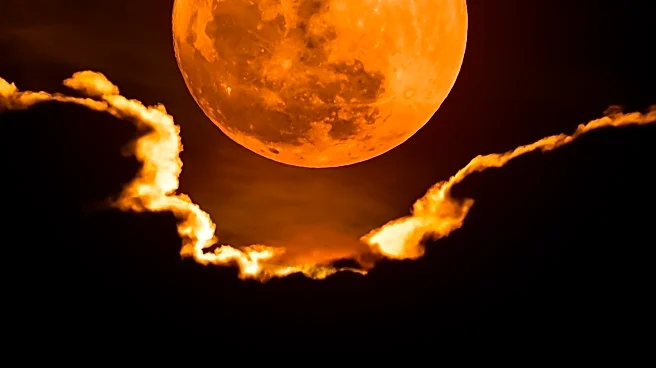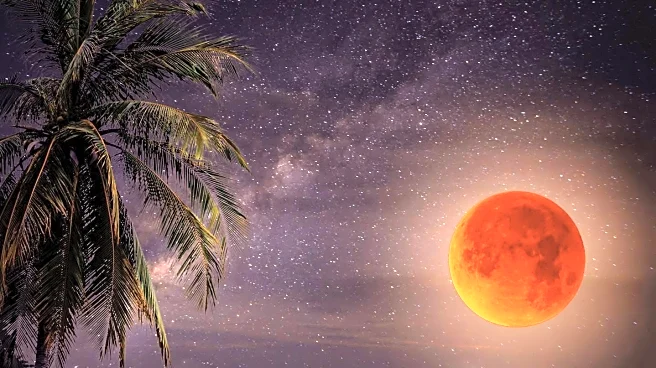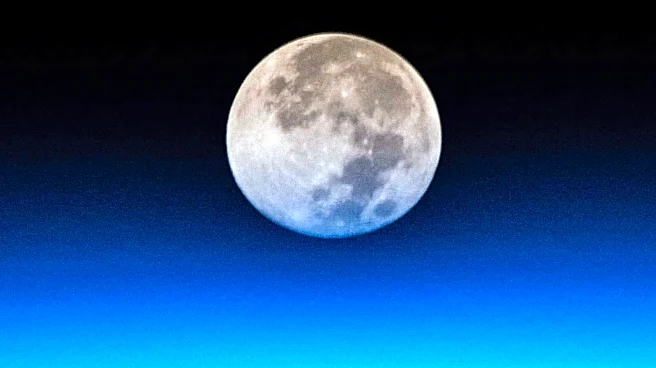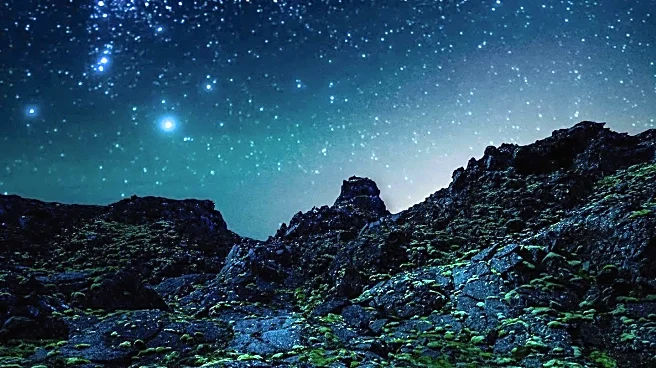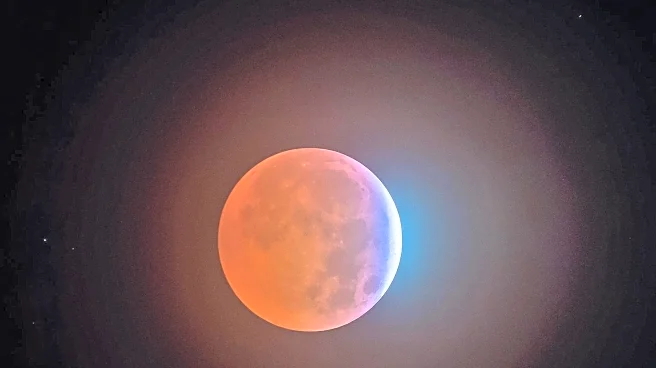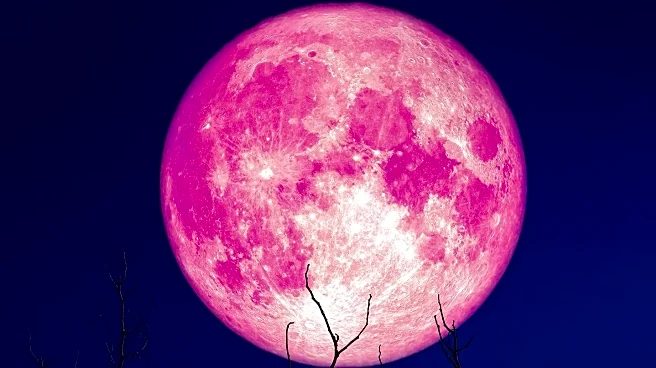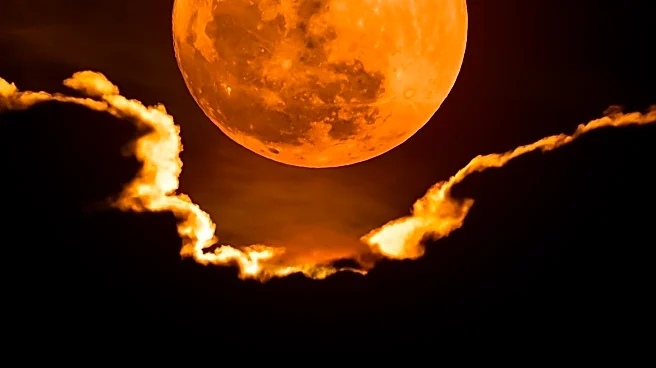What's Happening?
The October Harvest Supermoon, occurring on October 6-7, 2025, provided a breathtaking display as it rose over the eastern horizon. Known as the Harvest Moon, it is the closest full moon to the autumn equinox, historically aiding farmers in harvesting crops. This year's Harvest Moon coincided with the moon's lowest point in its 27-day orbit, resulting in a supermoon. During a supermoon, the moon appears up to 14% larger and 30% brighter than average, creating a spectacular visual experience. Astrophotographers worldwide captured stunning images of the moon, showcasing its beauty alongside landmarks such as the Washington Monument and the Statue of Liberty.
Why It's Important?
The Harvest Supermoon offers a unique opportunity for public engagement with astronomy, drawing attention to the natural beauty of celestial events. The increased brightness and size of the supermoon enhance its visibility, encouraging interest in skywatching and photography. This event also highlights the cultural significance of the moon, as it coincides with festivals such as China's Mid-Autumn Festival. The global interest in the supermoon underscores the universal appeal of astronomy and the shared experience of observing natural phenomena.
What's Next?
Following the October Harvest Supermoon, additional supermoons are expected in November, December, and January 2026. These events will continue to provide opportunities for observation and photography, as the moon's proximity to Earth enhances its visibility. As interest in celestial phenomena grows, educational initiatives and public events may be organized to engage communities in astronomy. The continued occurrence of supermoons may also inspire further research into lunar cycles and their effects on Earth.
Beyond the Headlines
The Harvest Supermoon highlights the importance of preserving dark skies for astronomical observation, as light pollution can hinder the visibility of celestial events. Efforts to reduce light pollution and promote dark sky initiatives may gain momentum as public interest in astronomy increases. Additionally, the event underscores the cultural and historical significance of lunar phenomena, reminding us of the moon's impact on human activities and traditions.

